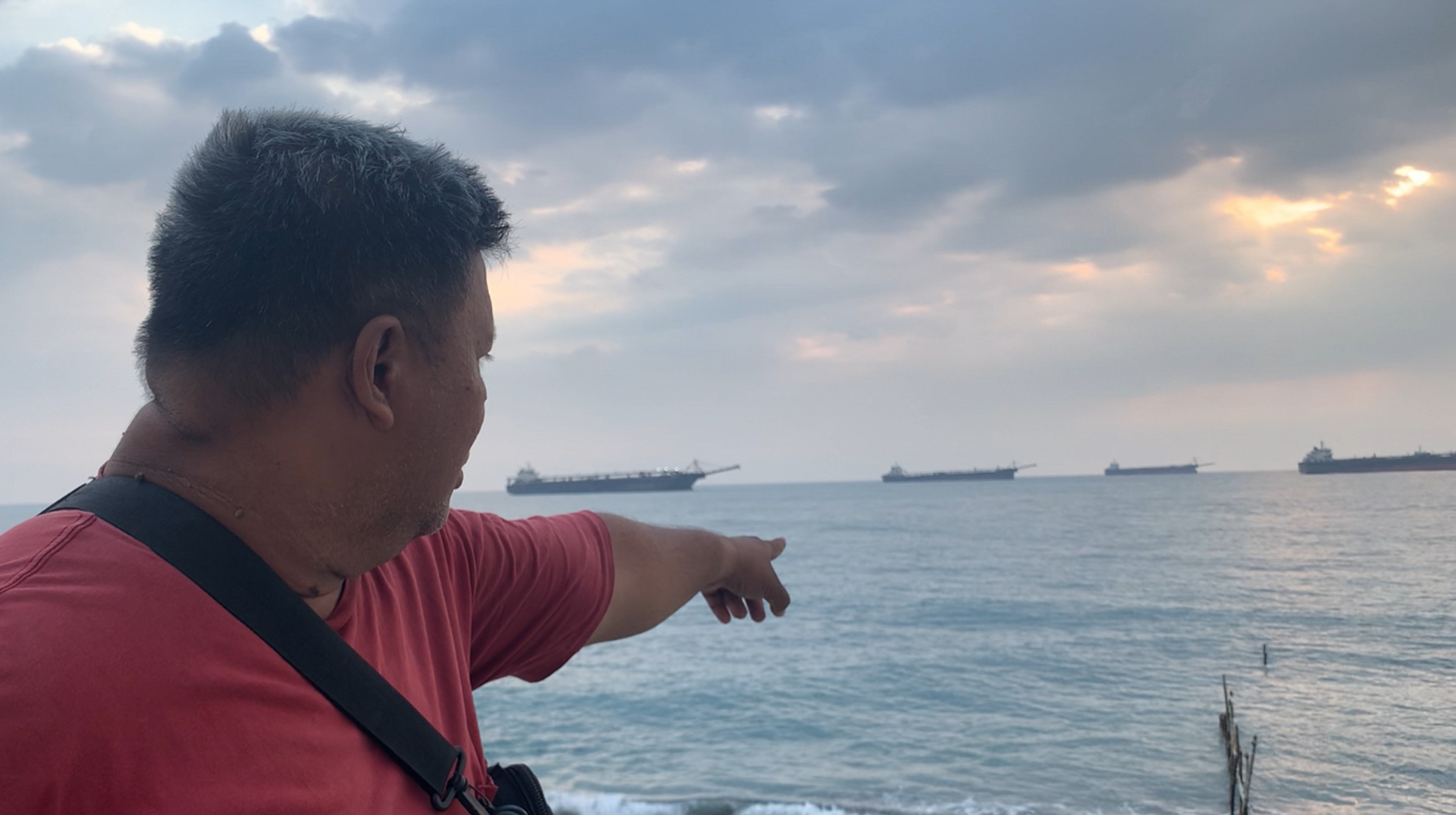PCG detains 17 vessels involved in Zambales dredging

RIVER RESTORATION Several dredging ships are seen in the waters off San Felipe, Zambales, in this photo taken on March 8 at Sitio Tektek in Barangay Sindol. The vessels have since left the province after Gov. Hermogenes Ebdane Jr. suspended the dredging activities for a river restoration project so local officials could address the complaints of some residents, most of them fishermen. —PHOTO BY JOANNA ROSE AGLIBOT
SAN FELIPE, ZAMBALES — At least 17 vessels involved in dredging activities in Zambales province have been detained by the Philippine Coast Guard (PCG) this week as authorities check for possible violations of the government’s environmental protection, safety, and security protocols.
According to a report by Rear Adm. Armando Balilo, the PCG spokesperson, on Friday, these vessels are all bareboat charters (leased) registered in the country but are owned by China Harbour Engineering Co. Ltd., which is conducting dredging operations in Zambales’ San Felipe town.
Held at Manila port
The vessels are being held at a port in Manila after PCG personnel conducted marine environmental protection and vessel safety enforcement inspections on board these vessels from Tuesday to Thursday.
According to Balilo, the inspection teams found at least 344 “deficiencies for adjudication” at the Coast Guard Station Manila.
During the inspections, PCG personnel secured a copy of the issued special permits and bareboat charter by the Maritime Industry Authority (Marina) to compare these with the list of identified dredgers and suction cutters in this province.
Article continues after this advertisementBalilo later told the Inquirer that the vessels were detained because of violations of “safety and manning requirements.” He said the owners would be fined and the vessels would be released “until such time that they (owners) are able to correct the deficiencies.”
Article continues after this advertisementBalilo clarified that only the vessels, not the crew members, had been held. The crew members, he said, are all Filipinos.
‘Commander Euphraim Jayson Diciano, acting PCG Zambales station head, said the inspections were conducted at the Manila anchorage area by the Maritime Safety Services Command, a unit of the PCG.
Hearing
“After the inspection, the report will be submitted to the concerned station commander. And in this case, since the inspection happened in Manila, the station commander in the area will be the one who will ask the ships’ owner or operator to explain [the deficiencies],” Diciano said.
“It is a sort of hearing to weigh things, [a chance to ask them] why they have such violations because we also need to give them the opportunity to be heard. We also need their side,” he added.
READ: Ilocos provinces ask help for river dredging as solution to worsening floods
Diciano cited instances when the vessels’ statutory certificates or other required documents were found to be expired, but an application for a new one was pending with Marina.
“So, the vessels will be detained, but once their paper comes out, that’s okay. The offense will be rectified [if that’s the case],” he said.
The ships’ owners, Diciano said, have to report to the PCG within 10 days after being notified of the deficiencies.
“After the PCG station commander weighs all the circumstances vis-à-vis the reasons of the shipowner, the station commander will resolve and send [the report] to inspectors [for another assessment],” he said.
Foreign ships
Aside from the 17 vessels, three more foreign ships involved in dredging activities in Zambales were also inspected in the province’s Botolan town on March 19.
These vessels were a cutter suction dredger from China, found with six deficiencies; an anchor boat from Sierra Leone, with seven deficiencies; and a tugboat from Panama, with 12 deficiencies.
Balilo said the foreign vessels were not detained because these were “foreign-registered and the procedure is different.”
At least 36 vessels, many of them carrying Chinese workers, are involved in the massive dredging operation in San Felipe, according to local officials.
Recently, residents here were alarmed by at least 14 dredging vessels with Chinese crew members operating in waters off this town. All vessels, however, left the area after the provincial government suspended the activities following protests from villagers.
Gov. Hermogenes Ebdane Jr. said the suspension would allow local officials to address the concerns of some residents, mostly fishermen, who had complained about the dredging activities’ adverse impacts on their source of livelihood and the local marine ecosystem.
Based on Administrative Order No. 13 of the Department of Environment and Natural Resources, the dredging project is part of the river restoration to rehabilitate the “heavily silted channels of the Bucao River in Botolan town, Maloma [River] in San Felipe town and Sto. Tomas [River] traversing the towns of San Marcelino, San Narciso and San Felipe” in Zambales province, mainly to prevent flooding.
READ: Dredging our assets